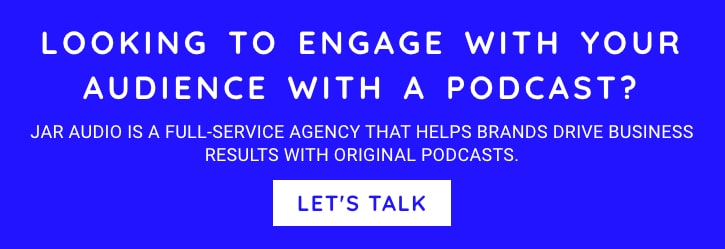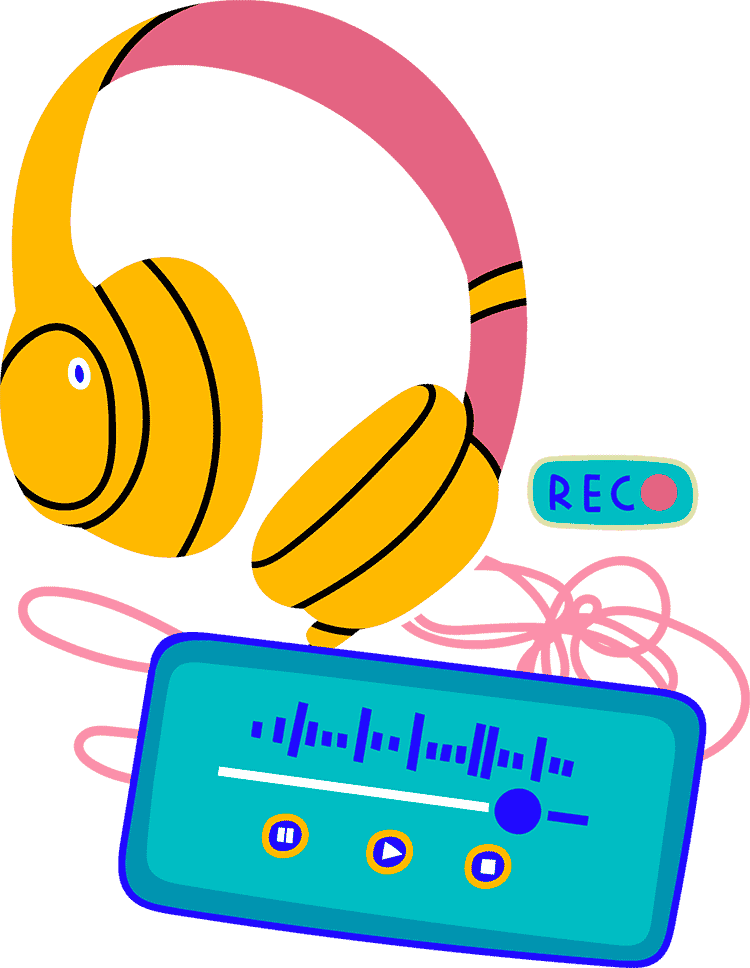Increase touchpoints. Boost awareness. Watch brand loyalty grow.
Killer content marketing rarely comes as a one-prong approach, and today’s successful brands rely on savvy content marketers.
For this reason, we recommend that brands back up their corporate podcast with several streams of supporting or related material.
If you want to boost brand awareness and affinity, the number of touchpoints you create between your brand and your audience will be absolutely critical.
We’re selling and growing in a digital world. Your competition is everywhere. You should be as well.
Everytime you show up for your audience — with value and without a transparent agenda — you are rewarded with trust, loyalty, and a little more assurance that they’ll actually remember you.
For this reason, we encourage brands to dive deep into content marketing, and build a complex network of content that will drive your ideal customers into your circle.
In this post, we share ten of our favorite pieces of content to create alongside your corporate show.

The short list
Before we get into the nitty gritty, here’s a quick roundup…
- Social posts
- YouTube videos
- Blog posts
- Digital workbooks
- Ebooks
- A podcast-specific newsletter
- Transcripts
- A press release
- White papers
- Live events
We dive deeper into all of these types of content below.

Social posts
Why not start with the obvious? If you want to smash your content marketing goals, you should plan at least one social post to accompany every new episode of your show.
Some brands take this even further, and launch social accounts dedicated exclusively to their corporate podcast. This may also increase trust, and make your content appear less “promotional.”
TikTok, Instagram, and Twitter are all great channels, but you should pick your platforms based on your niche, target demographic, and long-term goals.
(Not sure which to choose? Here’s a post that will help you determine the best social channels to drive traffic to your show.)
Once you’ve picked your ideal platforms, you will of course need to decide what kind of content to post.
While you should keep your listeners in the loop by announcing each new episode, a great content strategy will dig a little deeper.
Your social posts might…
- Tease a secret guest or upcoming episode
- Expand on topics you cover in show
- Or sum up useful tips shared by your guest or host
Ultimately, there’s a massive opportunity here — to create buzz, inform and entertain your audience, and spark an engaging dialogue that deepens interest in your podcast, and your brand as a whole.
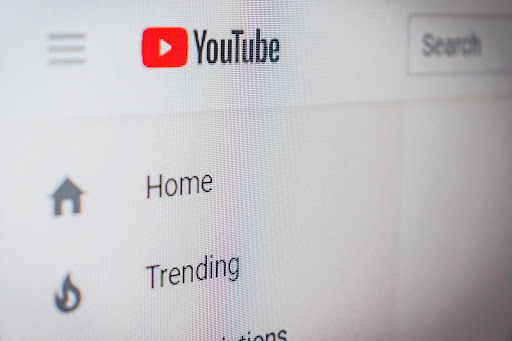
YouTube videos
Next up is video content, a relatively easy way to expand your reach, boost accessibility, and connect with folks who value your show.
Lots of successful podcasts release their content to YouTube — some sharing segments, others entire episodes.
Today, hit podcasts like those from Jay Shetty and Rich Roll have earned more than half a million subscribers on YouTube alone.
But this isn’t just about YouTube growth.
Video is a super powerful tool for brands that want to…
- Accommodate folks with hearing loss
- Reach people who don’t consume podcasts yet
- Or offer a multi-sensory experience for die-hard fans of your show
Even better — it’s not that much more effort on your end, relatively speaking. In this case, you are repurposing content you’re making regardless.
That said, depending on your budget, and whether your brand is already leveraging video, you may also choose to create videos that expand on the topics you cover in your show.

Blog posts
If you want to extend the reach of your series, and claim your spot among the leading experts in your field, you should also pair your corporate podcast with corresponding blog posts.
This simple move can spark a big-picture performance boost — especially if your writer has mastered SEO.
By optimizing your blog posts, you can…
- Boost website traffic
- Increase your credibility
- And connect with the folks you want in your circle
So, what should these blog posts look like?
You might choose to…
- Create posts that announce new episodes
- Build on what you cover in in show
- Or sum up wisdom shared by your guest and host
Ideally, you should aim to offer real value right then and there. Keywords can’t save you from subpar content, and reader experience should always trump SEO.
That said, it’s a good idea to hold something back no matter which angle you choose. Ideally, your blog should incentivize listeners to tune in to your podcast as well.
Again, we’re aiming to increase the touchpoints you have with your prospects, ultimately boosting brand affinity, and your long-term conversion potential.

Digital workbooks
Depending on your niche, you may be able to help your audience by sharing workbooks or printouts that connect to the topics covered in your show.
This might make sense if your podcast…
- Offers business advice
- Touches on mental or physical health
- Or has anything to do with creative work
But those are just a few examples.
If your series was made to educate and inform, well-designed and self-guided resources will help you lend a hand, and remind your listeners that you’re here to help.
The end result? A reciprocal relationship, and lasting sense of loyalty to your content, your podcast, and your brand as a whole.

Ebooks
On a similar note, we have ebooks, another great resource to help your fans, and round out your show.
Yes, ebooks are substantial projects, but they can be super effective when they’re well executed — and you might be able to promote one you’ve already rolled out.
Whether they come before or after a show, this type of easy-to-reference content can help you tackle topics that are particularly broad or complex, and offer extra value to the folks that love your show.
And as another perk, you can release them as gated content — prompting your audience to submit their email (and join your email marketing list) pre-download.
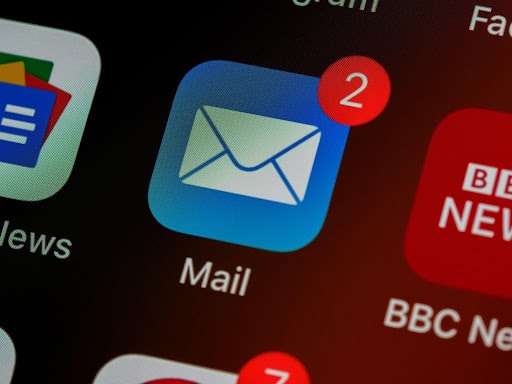
A podcast-specific newsletter
Some brands also choose to launch a newsletter specific to their corporate show.
Through this channel, you can share…
- Sneak peaks and teasers
- New episode announcements
- And other resources your listeners might find helpful
This is a great way to keep your fans tuned into your series, and drive them toward any of the content types we’ve already discussed.

Transcripts
If you’re asking us, sharing a transcript with every new episode is an absolute must.
The first reason for this is accessibility. You’ve worked hard to create a value-packed series, and it should be enjoyed by as many people as possible.
By offering a transcript, you’re making your content available to folks with hearing loss, or who have trouble processing audio.
And as an added perk for your team, it should give you a bit of a boost when it comes to SEO.

A press release
While you may have newsworthy announcements later in the progression of your podcast, a great press release is especially important when it’s time to launch your show.
First impressions count, folks.
A qualified production agency should be able to take care of this for you, and leverage their network to make sure it’s received and read by the right people.

White papers
Depending on your niche, you may also want to roll out one or several white papers alongside your corporate podcast.
If you’re dealing with complex, technical, or scientific data, this level of formality can help legitimize your show, and all of your brand’s work.
Let’s look at an example. Through Disruptors, the podcast we made with RBC, we set out to spark a larger conversation around climate change.
As part of this process, RBC also released this report which took a deep and methodical dive into some seriously complex material.
Contributors include experts in economics, the environment, and even digital media — all for an end result that’s polished, easy to interpret, and credible.
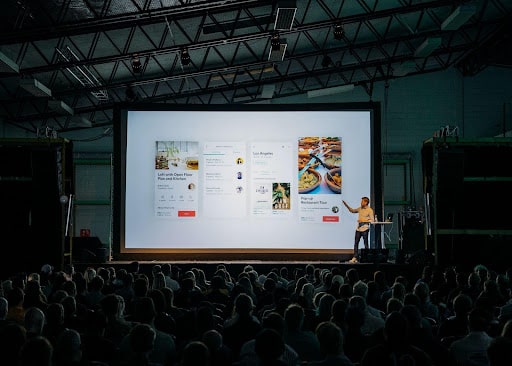
Live events
And finally, live events are a total game changer.
By making in-person connections with the folks who love your show, you foster a vibe of community and engagement that can’t be found elsewhere.
If you happen to have an internal podcast, even better. Events like these can play a massive role in shaping and affirming your unique workplace culture.
We put this method to work with the Leadership Series we produced with the team at lululemon.
Inspired by the success of their internal podcast, this activewear giant staged live events, featuring authors, advocates, and thought leaders of all kinds.
We even doubled down on value by recording these events, and rolling them out as part of their existing content library, making the most of every step we took. (Here is an example.)
Again, this is an opportunity to offer something of real value to your audience — prospects or team members — and create a loyal network that will stick by your brand long term.

Quality over quantity
Ultimately, in looking at this list, you should aim to pick content streams that work for your niche, your podcast, and your brand as a whole.
The goal should not be to create as many streams as possible, but to pick a few types of content, and execute them exceptionally well.
Touchpoints are critical, but if they’re lacking in substance or value, you won’t get the results you’re hoping for.
To learn more about building relationships with your corporate show, check out our list of 5 Ways to Make Meaningful Connections with Your Branded Podcast.
